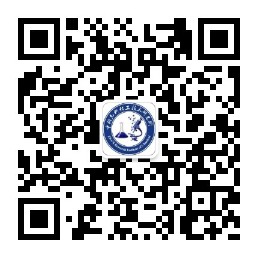歡迎訪問中科光析科學技術研究所官網!
- 聯系我們
- 關注微信

歡迎訪問中科光析科學技術研究所官網!


免費咨詢熱線
400-635-0567|
汽車座椅及零部件檢測項目報價???解決方案???檢測周期???樣品要求? |
點 擊 解 答?? |
本標準規定了供一名或多名兒童乘坐的兒童輪式推車安全要求和測試方法。 本標準不適用于玩具推車或設計用于其他特殊用途的推車。
本標準規定了出口兒童高椅的安全要求、測試方法及標志、使用說明。本標準適用于供6個月到36個月之間的兒童使用的出口兒童高椅。本標準不適用于以下兩種情況:多功能兒童高椅調節成嬰兒學步車、推椅、搖椅、汽車座椅及斜躺矮椅等附加功能時;大齡兒童與椅中兒童進行互動或者3歲以上使用者的濫用或不正確使用高椅時。
本標準規定了機動車兒童乘員用約束系統(以下簡稱兒童約束系統)的術語和定義,在車輛上的安裝及固定要求,約束系統的結構,以及對約束系統總成及其組成部件的性能要求和試驗方法。本標準適用于適合安裝在三個車輪或機動車的兒童乘員用約束系統,但不適用于安裝在折疊座椅或側向座椅上的兒童約束系統。
本標準規定了車裝鉆機的型式、基本參數、型號與表示方法、試驗方法、檢驗規則、標志、包裝、運輸與貯存。本標準適用于石油鉆井用車裝鉆機的設計、制造和質量檢驗。本標準不適用于地震物探用車裝鉆機。
本規則適用于可在中國公路及城市道路上行駛的M類汽車、N類汽車和O類掛車(包括完整的或不完整的)。不適用于在軌道上行駛的車輛、農業與林業用拖拉機和各種工程機械以及其他非道路車輛和三類底盤。
本規則適用于M、N類汽車的座椅產品(但不適用于折疊式座椅、側向座椅、后向座椅和M2、M3
本標準規定了機動車兒童乘員用約束系統的進出口檢驗技術要求、檢驗方法等要求。本標準適用于為能穩固安裝在三個車輪或三個車輪以上機動車輛上的兒童乘員用約束系統的進出口檢驗,但不適用于安裝在折疊座椅或側向座椅上的兒童約束系統的檢驗。
本標準界定了汽車座椅術語及其定義。本標準適用于M<下標1>類(GB/T 15089-2001)車輛的座椅,也可推廣使用于載貨汽車、客車的座椅。
本標準規定了乘用車調角器的術語和定義、技術要求、試驗方法、檢驗規則、標志、包裝、運輸、儲存等要求。本標準適用于M<下標 1>類車輛的座椅用調角器,包括電動調角器和手動調角器。手動調角器有連續式手動調角器和非連續式手動調角器。M<下標 2>和M<下標 3>類車輛座椅用調角器可參照執行。
本標準規定了動車司機座椅的使用條件、技術要求、試驗方法、檢驗規則以及標志、包裝、運輸和貯存等。本標準適用于動車司機座椅,其他機車車輛司機座椅可參照使用。
本標準規定了汽車起重機專用底盤的術語和定義、技術要求、試驗方法、檢驗規則、包裝、運輸和貯存。本標準適用于汽車起重機專用底盤(以下簡稱底盤)。
This standard provides a framework for the terminology on biomimetics in scientific, industrial and educational purposes. This standard is intended to provide a suitable framework for biomimetic applications. The field of biomimetics is classified and defined, numerous terms are described, and a description of the process of applying biomimetic methods from the development of new ideas to the biomimetic product is provided. The limits and potential of biomimetics as an innovation approach or as a sustainability strategy are also illustrated. In addition, the standard provides an overview of the various areas of application and describes how biomimetic methods differ from classic forms of research and development. If a technical system is subjected to a development process according to this standard, then it is allowed to be referred to as a biomimetic system. The standard provides guidance and support for developers, designers, and users who want to learn about the biomimetic development process and integrate biomimetic methods into their work aiming at a common language for scientists and engineers working in the field of biomimetics. It can be applied wherever nature has produced a biological system sufficiently similar to the technical target system that can be used to develop a technical equivalent.
 前沿科學
微信公眾號
前沿科學
微信公眾號
 中析研究所
抖音
中析研究所
抖音
 中析研究所
微信公眾號
中析研究所
微信公眾號
 中析研究所
快手
中析研究所
快手
 中析研究所
微視頻
中析研究所
微視頻
 中析研究所
小紅書
中析研究所
小紅書